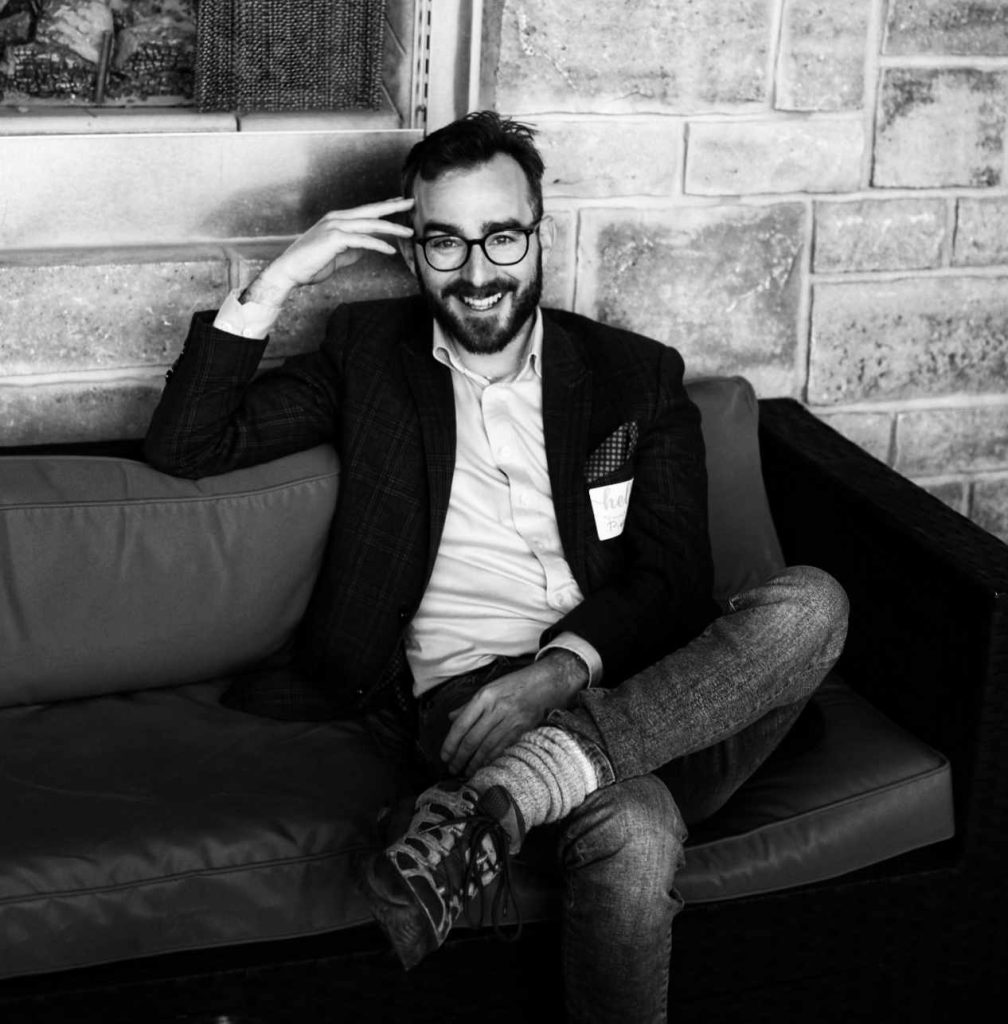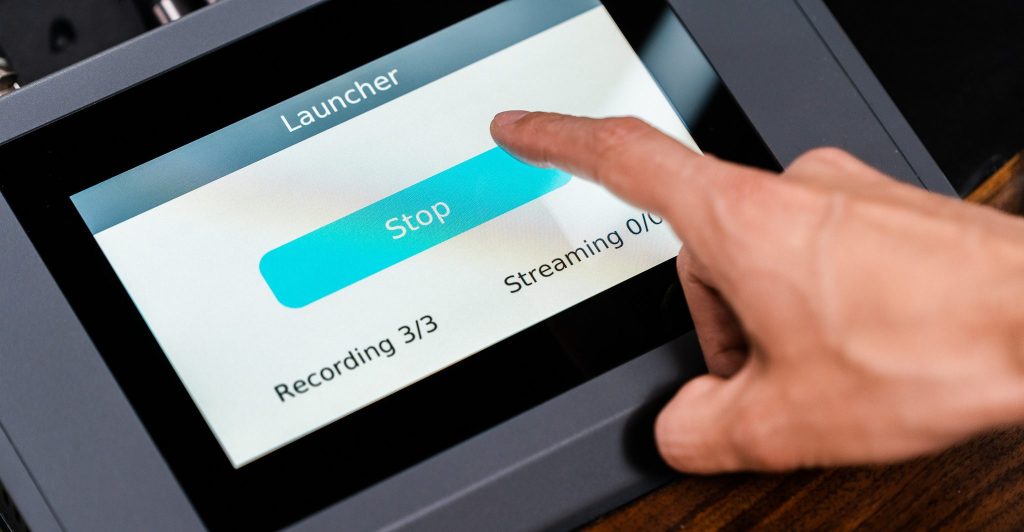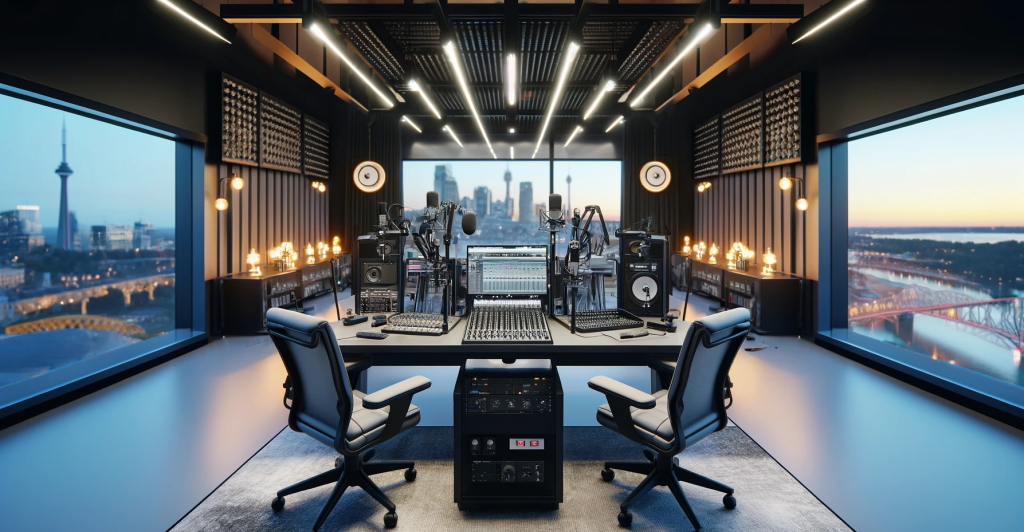Here at Uber Flix, we wanted more than a solution that works for everyone, we wanted a great studio with tons of customizable features that put the host of the show in charge. We wanted an integrated system that could be relied upon 24/7.
The challenge
How do you get three cameras, two microphones, a cloud, and process software to work together to record a podcast without a human actor? That was the key question.
Of course, we needed a lot of processing power, but we also needed it to be agile, adaptable, and flexible. That’s why we turned to Epiphan. UberFlix is basing itself on the innovations of JeemanGo Studio in Gatineau, Canada. For this studio, three cameras and two microphones were connected to an Epiphan Pearl 2, a fantastic machine that does heavy-duty processing of multiple separate media channels like it is a piece of cake.
But that was only one machine. The Uber Flix studio is using FOUR of these machines to power through. Why did? Because we wanted each camera to be prompted remotely, using power-over-Internet. This allows for complete remote access to the studio.
The new studios significantly increased the company’s video production capacity. Before, the team members could only travel to one shoot location at a time, whereas now they can receive and edit footage from four different studios simultaneously. The model has potential to continue growing as more studios are added.
Video production company ramps up operations with cloud-enabled efficiency, Epiphan Videos
One Camera Controller to Rule Them All
We realized early on that linking up all the technology was only half the battle. The real challenge lies in making it accessible and user-friendly for our clients. The goal was simplicity and functionality, not an intimidating control panel resembling a spaceship’s dashboard. We aimed for a control device that’s straightforward and manageable—just a few intuitive buttons to adjust the TV, cycle through different LED lighting modes, and easily start or stop recording.
Enter the SKAARHOJ PTZ Pro controller—a sleek gadget that turns the art of controlling PTZ (Pan, Tilt, Zoom) cameras into a breeze. With its tactile, feedback-giving buttons that you can program to your heart’s content, it’s as easy to use as your favorite TV remote. This little powerhouse cuts through the tech jargon and complexity, letting you adjust your camera settings without breaking a sweat.
Why is the SKAARHOJ so essential for our studio’s success? It’s a game-changer, really. This controller puts powerful production tools in the hands of our clients, making it a cinch to focus on creating great content instead of wrestling with tech. It doesn’t just simplify the process of recording and adjusting visuals; it elevates the entire experience. With the SKAARHOJ PTZ Pro, top-notch podcast production becomes a reality for creators of all skill levels, ensuring our studio is a launchpad for creative brilliance.
At first, the thought of manually setting up the Skaarhoj felt like a mountain to climb. But once we got the hang of it, we were thrilled by its potential. The CEO of Skaarhoj himself walked us through a tutorial, giving us the lowdown on how to configure our cameras, plug-in TV, and an impressive set of LED lights.
By the end of it, we had six buttons neatly set up for recording, tweaking three different LED light setups, and moving the TV up and down. Was all that effort worth it? Absolutely. We put in the work so our clients can glide through their sessions without a hitch.
The Right Tech on the Right Table
Once we had our SKAARHOJ, the next thing we needed was the perfect cinematic table. Wood was an obvious choice—we both craved a touch of nature to counterbalance the hyper-minimalist vibe of the studio. Luckily, we had a friend who had been hoarding precisely the type of timber we were after: white oak.
Choosing the right dimensions was a bit of a challenge. How large should it be? Did we want our guests practically in each other’s laps, or should we allow ample space for their coffee mugs, laptops, and other keepsakes? Whatever their needs, the table had to fit comfortably within the confines of our space. Ultimately, the format was crucial.
We opted for a 7-foot wide table in a V-shape. This design meant our guests could easily high-five without leaving their seats, and our viewers would enjoy a generously proportioned table that matched the width of our wide-angle camera.

Pierre Bussières is Editor of Uber Optimized, Director of Sales with JeemanGo Podcasts, and Editor in Chief of Hoppy History. He writes on alcohol markets, beer history, and disruptive technologies. He previously wrote for Global Risk Insights, the Diplomat, Reflets, La Montagne des Dieux, the NATO Association of Canada, Diplomatie, and Le Temps d’une Bière.




Pingback: Top 5 Reasons to Record Your Podcast in a Professional Studio - OnPod Studios